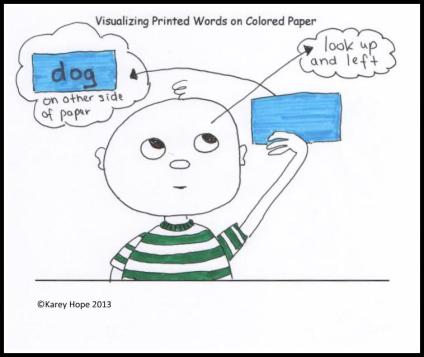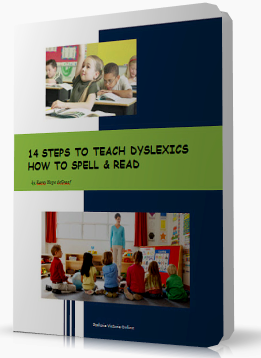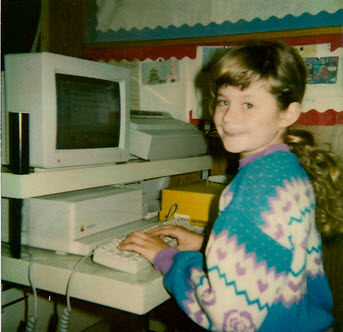
Gen, my dyslexic daughter who started my search for answers to understand Dyslexia and how to manage it.
When my daughter Genevieve and my other two children were assessed as having Dyslexia back in the 1980’s I began a long journey to find ways to teach them. The school system in California did not have any programs for their learning difference so I had to look else where for ideas.
Not much was known about Dyslexia at the time but I was fortunate to meet many interesting people in the San Francisco area who were studying Dyslexia and working with children and adults to help them with their learning problems. We tried all kinds of therapy; some worked, some worked a little and others not so much.
One surprising and extremely simple idea was given to me by a teacher from a school called New Horizon School and Learning Center in Santa Rosa, northern California for kids with learning disabilities. I had heard good things about them so I gave them a call. The person I spoke to suggested I bring my daughter in and they would see what they could do to help her (New Horizon provided assistance that provided insight to help me understand my daughter and taught me how to teach her successfully!). One idea she told me over the phone along with some tweaks of my own over the years became one of my best tools working with Dyslexic children.
Gen, a fifth grader at the time, was a very poor speller. The lady from the school suggested trying an experiment to show Gen a different way to remember spelling words. She told me to get a yellow piece of paper and print a word on it in large thick letters in felt pen she didn’t know how to spell. Then she told me to have Gen sit looking straight ahead and hold the yellow paper with the printed word up and to the left of her head. Then as she is staring forward she moves her eyes up to the piece of paper. As she is looking at the yellow paper with her body and head sitting straight and eyes up and to the left she looks at the word, says it, and then reads the letters out loud right to left and then left to right (frontwards and backwards). Gen repeats this process 3 times. Then closes her eyes, imagines the yellow paper and word printed on it. She says the word aloud again and says the letters she sees in her mind frontwards and then— backwards!
I kind of scoffed at this but I thought worth a try. I had tried a lot crazier things with my kids. I decided to pick a long multi-syllabic word because of course I didn’t believe it could work. I put Gen through the process that had been described to me and she did it – frontwards and backwards – easily. There is extensive research on eye movement and what it means as far as memories and imagining things. However I haven’t found any conclusive evidence on what eye movement means but lots of speculation such as this article: http://www.livescience.com/1473-moving-eyes-improves-memory-study-suggests.html.
The lady I talked to from the school said memory could be aided by looking up to the left. This was back in the 80’s and I don’t know if this is true but what I learned, in my opinion, it is important to have Dyslexics visualize something as a picture with parts in order to retain it. So a word is a complete picture with parts (the letters). The colored paper helps them create an image of the word in their mind by providing a background and the colour helps the word stand out.
Over the years through research and experimentation I have found a way to accomplish memorizing words effectively with this method with a few changes and additions. This method has been called “boxing words” or “word boxing” by some teachers I have talked to over the years. I have been trying to find some information on the net about boxing and this article is as close as I have gotten so far: http://www.visualspatial.org/files/app2spell.pdf
I describe my method in one of our manuals called “14 Steps to Teach Dyslexics how to Spell and Read”. All the Dyslexic children I have worked with have been able to visualize words this way. 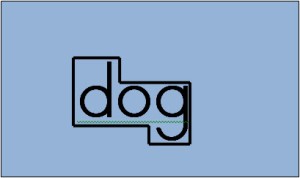 The image here of the word “dog” on the blue paper is how we create flash cards for “boxing”. This type of practice will help a Dyslexic visualize words in their minds so they can start to retain them. The 14 Steps has 13 other practice methods to help Dyslexics improve their spelling and reading fluency.
The image here of the word “dog” on the blue paper is how we create flash cards for “boxing”. This type of practice will help a Dyslexic visualize words in their minds so they can start to retain them. The 14 Steps has 13 other practice methods to help Dyslexics improve their spelling and reading fluency.
Try it. If you have difficulties trying to do this exercise, email me at khope@dyslexiavictoria.ca
Karey Hope
Co-founder Dyslexia Victoria Online
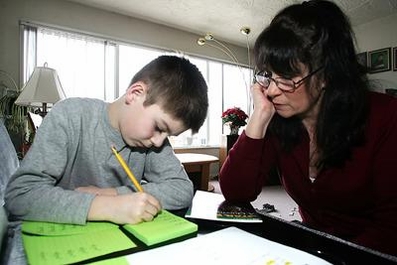
If you have a question, comment or suggestion for a future blog please fill in the contact form below:

